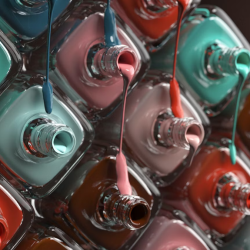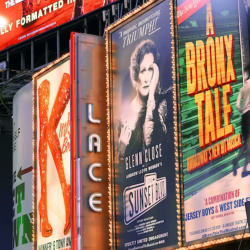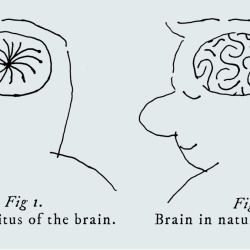In the pantheon of great advertising creatives, you will look hard for the name of John Chervokas. Yet he deserves a place. In 1964, a junior copywriter at Benton & Bowles in New York, he was briefed to write a campaign for P&G’s toilet tissue, Charmin, demonstrating the product’s softness. Years later, he explained his source of inspiration:
“What does mom do in the super-market? She squeezes the melons. And the tomatoes. And the bread. To see if they’re soft. … Why not use the same test for Charmin?”
Together with creative director Sid Lerner, he developed the thought into a series of commercials where a grocery store manager called Mr Whipple was continually having to tell his customers ‘Please, don’t squeeze the Charmin’. As an added gag, as soon as the customers had been driven off, Whipple could never resist squeezing the product himself.
It was preposterous, but it worked. Sales of Charmin boomed, and continued to do so. The campaign ran for twenty years, actor Dick Wilson starring as Whipple in over 500 commercials. By 1975 Whipple’s face was the second most recognised in the United States, after that of the President. Wilson was mobbed in restaurants for autographs. The campaign was even revived in 1999, and when Wilson died, aged 91, in 2007, P&G re-ran clips of the old ads in tribute, saying Wilson/Whipple was ‘in our hearts forever’. The campaign was ranked no. 51 in Advertising Age’s ‘100 Greatest Ads of the 20th Century’.
And yet — rather like the Sunny Jim campaign which I wrote about in Why Does the Pedlar Sing? — the Whipple campaign is chiefly remembered today in the ad business as an example of everything ads should not be. This is largely thanks to Luke Sullivan’s best-selling book about creating ads, Hey Whipple, Squeeze This. In the opening chapter, the Charmin campaign is set up as a touchstone for bad advertising. Not that the author attempts to disguise its popularity or success: ‘He was selling literally billions of rolls of toilet paper. Billions.’ But none of this is important to Sullivan. All that matters is that ‘as an idea, Whipple isn’t good’.
What does he mean?
Sullivan admits he personally found the ads annoying when he was growing up. And he cites surveys claiming Whipple was the ‘most disliked’ TV campaign of its time, and deriding it as ‘stupid’ and ‘unbelievable’. In his support, Sullivan quotes the great creative director, Norman Berry: ‘…if sales are achieved with work that is in bad taste or is intellectual garbage, it shouldn’t be applauded no matter how much it sells’.
But all this needs to be put into perspective. One of Berry’s greatest achievements was a series of witty and well-crafted commercials for P.G.Tips (the UK’s leading tea brand ) featuring anthropomorphised chimpanzees. I later worked on the continuation of this campaign, which ran successfully for almost forty years. And repeatedly, consumer research told us the P.G.Tips ads were voted among the most annoying or stupid campaigns on TV.
But they were also among the most popular. And they worked.
Are the Charmin commercials ‘stupid’? Yes. Are they ‘believable’? Of course not. That’s exactly the point. They’re absurd, they’re certainly not meant to be realistic, and while some might be irritated by them, they’re actually quite funny — they send themselves and the whole business of advertising up, big time. They created powerful distinctive assets — the character of Mr Whipple, and the line ‘Please don’t squeeze the Charmin!’. They even communicate, for what it’s worth, a USP or consumer benefit about the softness of the product. They made the brand (and Mr. Whipple) extraordinarily famous, and by raising its mental availability built Charmin into a highly profitable success. They do exactly what brand advertising is supposed to do.
But Sullivan reveals a deeper reason for his damning of Whipple in a throwaway phrase — ‘these repetitive, schmaltzy, cornball commercials’. I’d say those aren’t bad qualities to have if you want to create something popular. They just happen to be the kiss of death if you want to appear cool and sophisticated in the advertising village.
And that’s why a whole generation of creative people have learnt that characters, catchphrases, irony, silliness, sentiment, and consistent campaigns that run for twenty years, are all things to avoid if you want to win one of those coveted creative awards — or even get a job. Everything Whipple stands for is simply ‘bad’. Yet we should really see this campaign as a great example of how to make a brand famous and successful.
There remains one final irony. Hey Whipple, Squeeze This is a great title — distinctive, intriguing, memorable, a bit ridiculous. I have no doubt it’s sold a lot of books. In just the same way that George Whipple (and John Chervokas) sold a lot of Charmin.
Featured image: Mr. Whipple Don’t Squeeze the Charmin Bath Tissue Toilet Paper
































